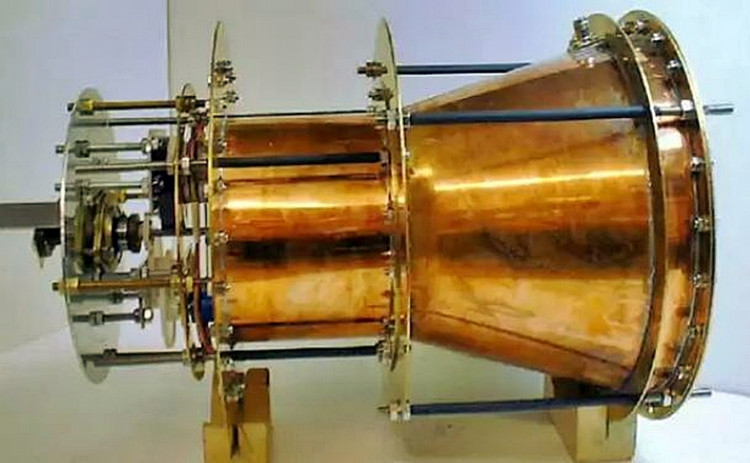The U.S. Defense Advanced Research Projects Agency (DARPA) has awarded a $1.3 million grant to divisive (to say the least) British physicist Mike McCulloch to prove his contentious "quantized inertia (QI) theory."
In McCulloch's own words, his quantized inertia theory suggests a new model for inertial mass that combines Special Relativity and Quantum Mechanics. Very controversially, quantized inertia predicts galaxy rotation without dark matter or adjustable parameters, and predicts the EmDrive (or propellant-less propulsion), another equally notorious technology that seemingly violates fundamental physical laws.
The starting point for this controversy is "Uhler radiation." McCulloch, a professor of physics at the University of Plymouth in England, described Uhler radiation as a kind of radiation you see when you accelerate.
When moving forward or accelerating, a horizon radiation appears behind you, and the radiation emanates from this horizon the way Hawking radiation is emitted by the horizon of a black hole. McCulloch said that one definition of quantized inertia is that the force we know as inertia is caused by a gradient in this Uhler radiation.
DARPA, however, isn't so much interested in the theory of quantized inertia, per se, as it is in the practical application of this theory. It wants to develop a far more workable version of the EmDrive engine that can be used to power U.S. spacecraft on very long interstellar voyages.
As a result of lingering interest in the EmDrive, there's more global activity in space, said Mike Fiddy, program manager for DARPA's Nascent Light-Matter Interactions program. DARPA is seeking to deepen its understanding "of how to move objects around in more energy efficient and versatile ways."
An EmDrive is an electromagnetic thruster that doesn't use any reaction mass. It also emits no directional radiation. This highly controversial space propulsion technology might propel a spacecraft in violation of the law of conservation of momentum. It's also called a radio frequency (RF) resonant cavity thruster.
In a still unexplained way, the thruster harnesses subatomic particles that continuously fade into and out of existence to produce thrust. It seems to "quantum vacuum fluctuation," an effect where sub-atomic particles create themselves on their own accord in the vacuum of space before self-destructing.
In previously published papers, McCulloch used his quantized inertia theory to explain galaxy rotation without the presence of dark matter, as well as the thrust achieved by the EmDrive.
McCulloch asserts the EmDrive is a manifestation of quantized inertia. He also believes a different set of experiments could produce more powerful QI-powered thrusts.
After 18 months of theory-building, the DARPA grant will help fund experimental teams in Germany and Spain, which will build a pair of thrust-producing experiments. One such experiment is a shielded laser loop, and another uses asymmetrical mirrors and laser light, said McCulloch.
If the experiments succeed, as predicted by McCulloch's theory, researchers will look for ways to enhance the thrusts.
A British aerospace engineer named Roger Shawyer is credited with developing the EmDrive in 2001. He's pushed the idea through his company, Satellite Propulsion Research. Chemical engineer Guido Fetta then designed the Cannae Drive, somewhat based on similar principles.
The EmDrive and Cannae Drive -- if they work as theorized - stand to revolutionize many propulsion applications, especially those used in spaceflight.






